
Through the efforts of the SMHPS, along with help and support from the entire community, our on-going preservation efforts continue to provide a doorway to Sierra Madre’s past, all made possible by generous support from our volunteers, members, and friends of the SMHPS.
Open most Saturdays from 10 a.m. to 12 noon.
To schedule school or special tours, please contact the Education Chair or the Museum Curator (contact information located on the "Board" page of this website).

Lizzie’s Trail Inn
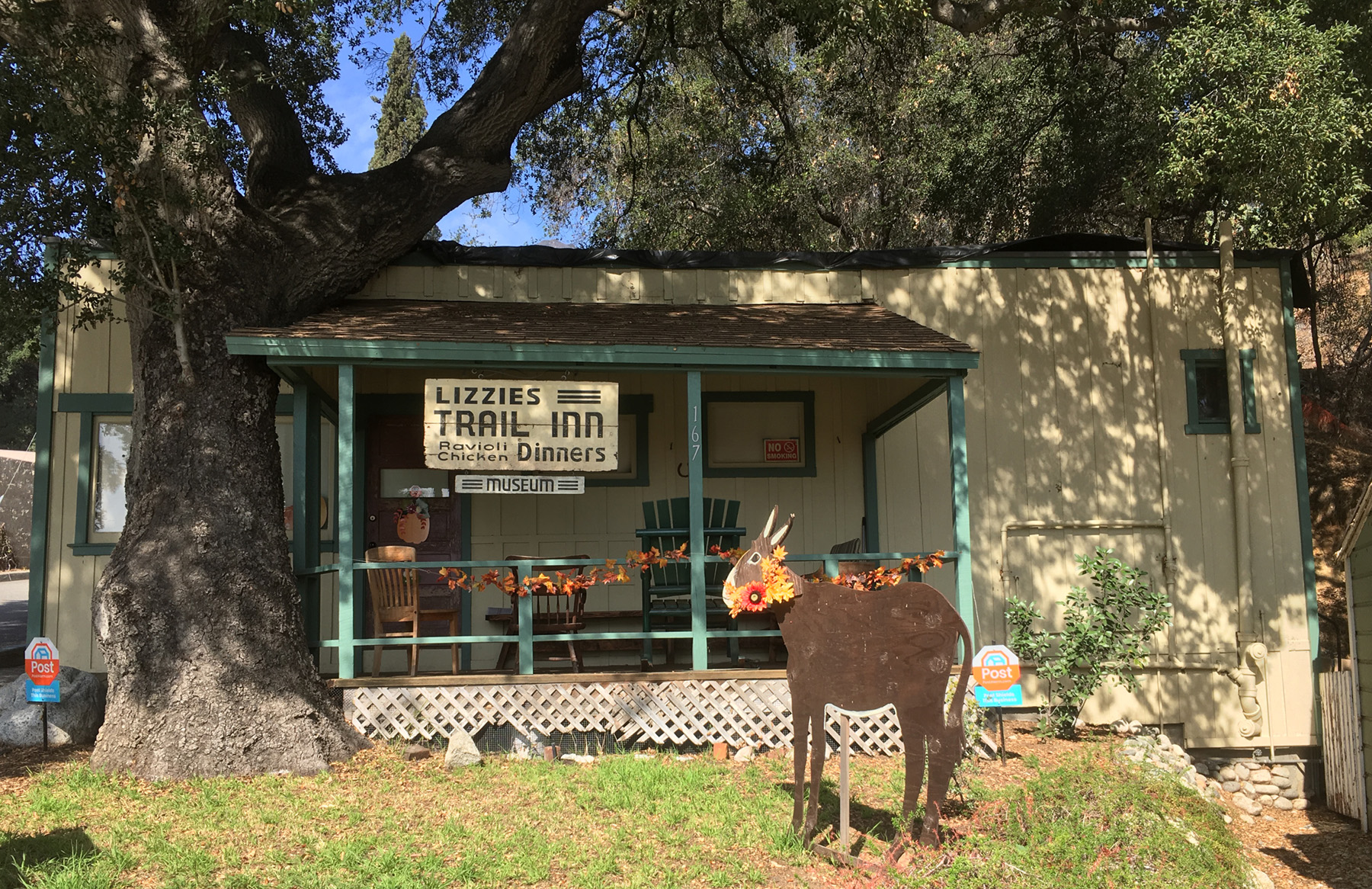
The predecessor to the current Lizzie’s Trail Inn stood opposite it on the northwest corner of Mira Monte and the original foot of the Mount Wilson Trail, as can be seen on the cover of the publication by John W. Robinson, Sierra Madre’s Old Mount Wilson Trail (commonly referred to as “the Trail book”). There are some stories that the establishment was referred to as “the eating place at the foot of the trail.” We do know that the building was called Doug’s Lunch Stand, and was operated by Walter Douglass. He can be found listed at that location (at an address no longer in existence) in the 1910 and 1920 census records. Several photos of this building are in both the Trail book and Michele Zack’s Sierra Madre centennial book, Southern California Story: Seeking the Better Life in Southern California.
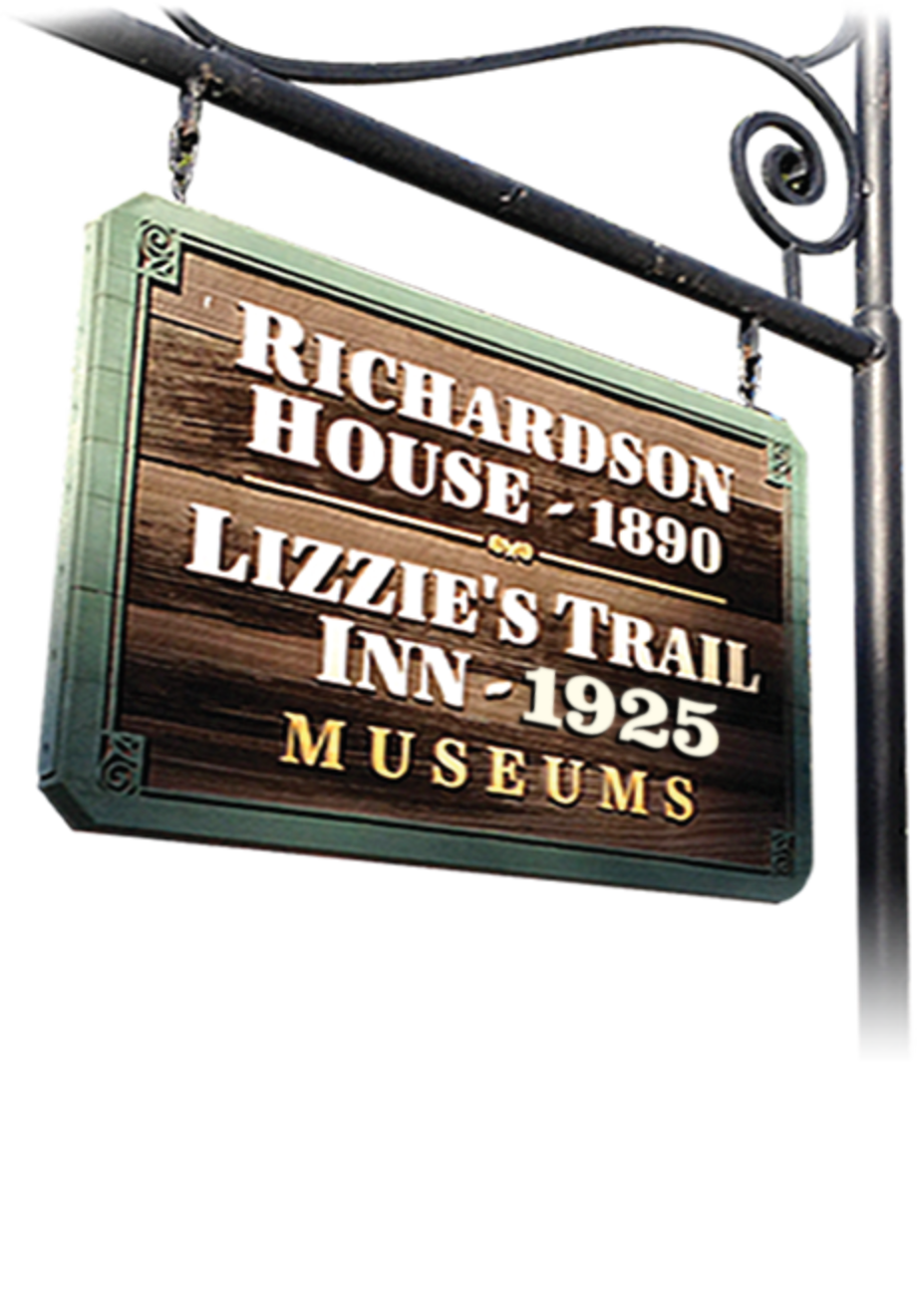
The Lunch Stand was a place to get food and drink and for hikers to check items. Some supplies were sold to hikers who planned on camping in the mountains. It featured an open air counter which would later be enclosed.
After Walter Douglass, the lunch business stand passed through two other owners, Otto Seng and J.J. Vanderburg, until Elizabeth Stoppel and her second husband bought the business (it having been relocated to the east side of the trail) in June of 1926. The land itself was owned by N.C. Carter first and then by William Caley (first Sierra Madre marshal) who purchased it in 1907, and eventually his daughter, Maybelle Caley Barker. It is not certain when Doug’s Lunch Stand was built, but the earliest photo we can find is circa 1910. It is possible that Marshal Caley built the building (as well as the building now known as Richardson House) after he purchased the land from the Carter estate. Caley would lease the business to the operators, but kept possession of the land.
Otto Seng would rename the lunch stand The Trail Inn. We know from dated photos that it was still on the west side of the intersection sometime in 1924 when the Vanderburgs' owned it, and was undoubted slated for demolition when the City of Sierra Madre acquired the land for a new, larger water reservoir. Construction of the tank commenced in 1925. We do not know for certain if the lunch stand building was possibly moved, demolished, or taken down, with material used to build the new building on the east side of the trail. Marshal Caley, who continued to own the land on the east side, leased this new building to Elizabeth “Lizzie” Stoppel and her husband Louis on June 26, 1926 as The Trail Inn.
The Trail Inn was a popular spot in Sierra Madre. It was a favorite spot of the Sierra Madre Volunteer Fire Department, who held several banquets there. In addition to Lizzie’s signature dinners of fried chicken, ravioli, and coleslaw, one item not advertised on Lizzie’s menu – at least until 1933 and the end of Prohibition – was moonshine.
Louis Stoppel, Lizzie’s husband, fancied himself a bootlegger and kept a still onsite. He was caught and cited at least two times for production of illegal whiskey. It was said that if you turned your coffee cup a certain way, you could get a little “warm up” of a special kind. The “jumping joint” also offered pinball, dancing and a one-armed bandit discreetly placed behind one of the booths near the restroom. Lizzie and Louis divorced in January of 1932. After Prohibition, you could count on great food, cold beer, and strong (legal) whiskey.
In November of 1935, Lizzie, already suffering from what many believe was breast cancer, sold the business to Joseph Keller, but one month later in December, took the business back. She said she had changed her mind.
Lizzie married her third husband, Edward “Mac” McElwain, in September of 1937. As Lizzie was not in good health, Mac had his family come to help run the business. After Lizzie died in 1939 Mac and his family changed the name to Lizzie’s Trail Inn in her honor. When Mac died in 1941, his relatives, the Ormes, operated Lizzie’s until the end of 1948. Food shortages made it difficult to keep the restaurant going. According to Maurice Orme, who was a young boy at the time, “We could only get enough food to stay open a couple of days a week and you can’t make a living doing that.”
After Lizzie’s closed, the property fell into disuse and sat vacant. In the early 1970s, Maybelle Caley Barker worked with the state and the city to have the City of Sierra Madre acquire the property where Lizzie’s Trail Inn, what we now call Richardson House (which had been a rental home), and the land east of there (where stables and a pack station had been) for a city park.
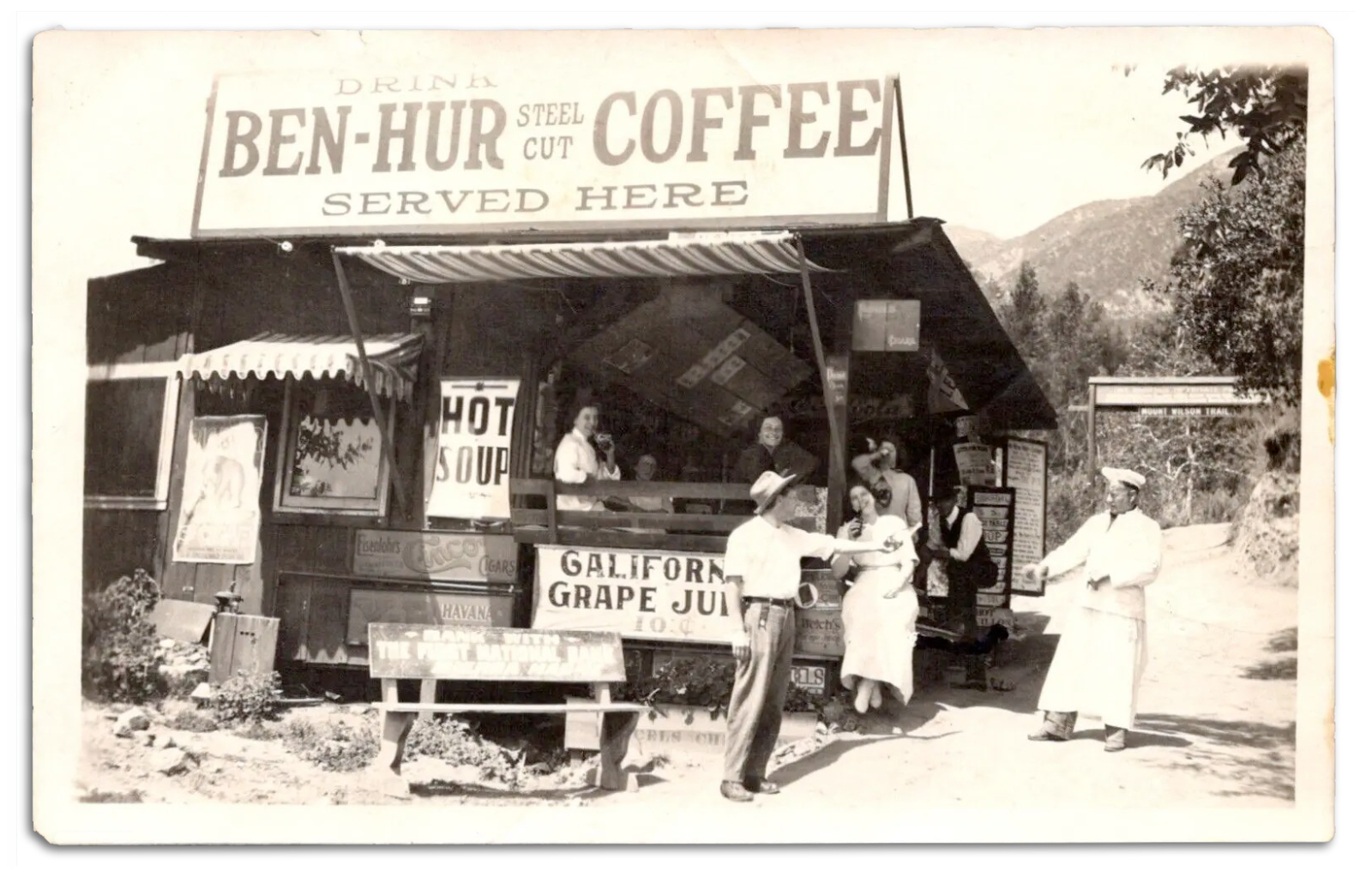
Lizzie’s aging structure was addressed in 1976 when a group of Historical Society volunteers took it on as a bicentennial project. Repairs were made to the best of their abilities and the Trail Inn (as well as the neighboring Richardson House) were dressed up inside and out to allow the public to visit them as museums. Before too long, however, the museums were once again shuttered due to lack of activity.
Fast forward to the early 1990s, and a couple of earthquakes later, when a new group of interested community volunteers began the fund raising and projects that would restore both buildings to the life they live today as living museums.
Lizzie’s today is a place where the public can learn about life in the last century and hear about the mountain resorts that were scattered in the hills above Sierra Madre. Weary trail travelers can “sit a spell” on the porch to relax and even read or watch the sunset, and old timers can gather on Saturday mornings to swap stories about the trails, the mountains, and the history of our town.

Richardson House
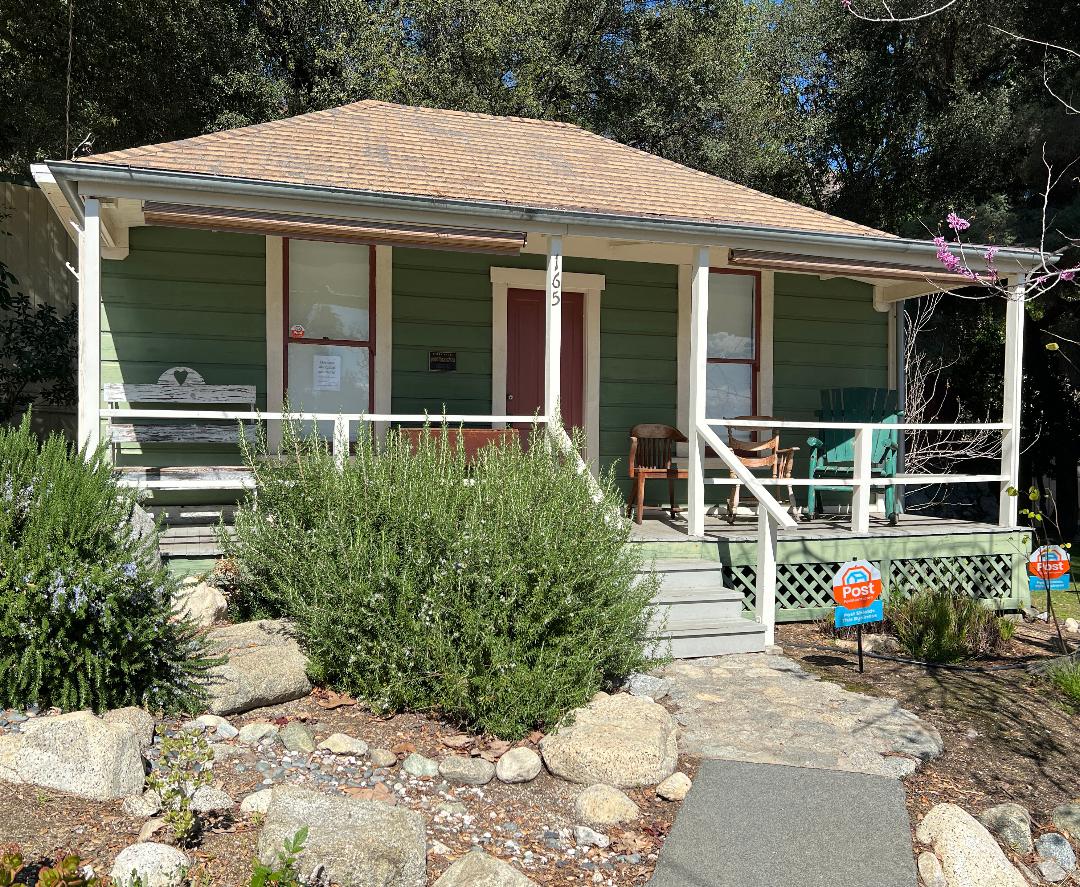
We believe the house we now call the Richardson House was constructed about 1890. If this is so, then it would have been constructed by N.C. Carter on land he owned. However, this land was purchased after Carter’s death by William Caley in 1907, and could have been constructed by him. The earliest photo we have found of the house is on a postcard which also shows Doug’s Lunch Stand at the foot of the Mount Wilson Trail, circa 1910.
To our knowledge, the house was always leased out to renters, and was owned by the Caley family until the City of Sierra Madre acquired it in the early 1970s, after the last tenant had been removed.
In 1976, the Bicentennial year, some members of the Historical Society came to believe that this was the home of our original pioneer, John Richardson, a stone cutter from Vermont. A photo of the John Richardson House looked very similar to the museum’s Richardson House, but there are subtle differences. And in the mid-1970s researching was not done as accurately as it is today, hence the confusion. They also believed that the house had been moved at least twice, ending up at the current location on Mira Monte, which we now know is not true.
The Annals of Early Sierra Madre, published by the Historical Society in 1950, did note that the John Richardson pioneer house was located in the Sierra Madre canyon, and was at that time part of Cypress Court, now absorbed into other housing.
Marrying in Illinois in 1850, John Richardson and family travelled via covered wagon to the New Mexico Territory before coming to California, finally settling in the Sierra Madre Canyon area by the 1860 Federal Census. John had purchased a land grant while in New Mexico from the original owner who had received it for his military service. This land grant began just east of present day Mountain Trail (which is east of the present day museum), and continued east from there into the canyon. His land did not include the land where the present day museums stand.
The location of the true John Richardson House is now a newer home on Old Ranch Road, the original house having been being torn down circa 1976. Researchers have done a site comparison of the newer home and the older photo of the real Richardson House, and have confirmed the location by sighting the mountain range in the background.
Although the Richardson House museum is not the home of our first Pioneer family, the SMHPS continues to lovingly care for it. Lizzie lived there after her divorce from Louis Stoppel (before she remarried) while she operated the Trail Inn. Today you can still see the trapdoor in the floor of the bedroom where it is believed Louis hid as much evidence of his bootlegging as possible in the event of a raid. Not sure who the paying tenants were at that time, but they must have been friendly to Louis’ cause!
The original house was the two front rooms, which are now decorated and set up to show how people lived in the late 1890s. They are a look into the simplicity of the “country” way of life at that time, with an outdoor kitchen and no indoor plumbing, let alone central heating or cooling. Between 1917 and 1920, the house was added on to in back and an indoor bathroom as well as true kitchen space was created. The kitchen has long since been decommissioned, as the Orme family did not need a large kitchen (having the kitchen at Lizzie’s) but did need some space for young son Maurice’s bedroom. However you can still see the claw foot tub and gravity-flush toilet in the bathroom.
Sometime in the early 1930s a utility room and storage area was added behind the kitchen. It is said that this area was used as an overflow kitchen when the Trail Inn got busy, as a laundry area, and (as rumor has it) one of the locations of Louis Stoppel’s whiskey still!
Much as hikers and the community gather on Lizzie’s porch in current times, so does the public gather on the porch at Richardson House. The true feel of another century in Sierra Madre is felt while sitting on this porch and imagining how life was in 1890 without the other houses and buildings surrounding it, and what the view of the wide-open San Gabriel Valley to the south must have been like.
History indeed lives.

Lizzie’s Story
Sierra Madre knows her as Lizzie, the operator of the Trail Inn on East Mira Monte at the foot of the Mount Wilson Trail in the mid-1920s and 1930s. History knew her as Elizabeth Louisa Ciez Adler Weiss Stoppel McElwain. She led a colorful but all-too-short life.
It is believed that her family name at birth was Ciez. We do know that that family who brought her to the United States were the Adlers, and Lizzie would continue to use that last name until she married Louis Weiss.
Lizzie was born in the Russian Empire on September 20, 1887. Her village of Mehalack was near Kiev in today’s Ukraine. According to her obituary in the Sierra Madre News of January 4, 1939, within months of her birth, her mother died and her father was killed. The story continued: a family with nine children took her in, and when she learned in 1905 of being adopted, the now-eighteen-year-old Elizabeth ran away to Kiev. A kind woman in the city, Celia Adler, welcomed the girl into her family. As it turned out, this woman was a sister of Elizabeth’s birth mother—her aunt!
Her new family immigrated to Cincinnati, Ohio, in 1908. Lizzie met her first husband, Louis Weiss, and they married in Cleveland in September of 1910. They welcomed their first child, Joseph, in August of 1911 in Ohio (whose birth record lists his mother’s maiden name as Adler) and then relocated to Los Angeles. In October 1913, their second son, Ruben (whose birth record lists Ciez as his mother’s maiden name), was born.
By 1913, Lizzie was the landlady at a rooming house at 309 Temple Street in Los Angeles (currently the site of the County of Los Angeles Heating and Refrigeration Plant). According to the previously cited obituary, she was fluent in nine languages and volunteered as an interpreter at the Los Angeles County Hospital on Mission Road on the east side of the Los Angeles River. Mr. Weiss passed away in July of 1920 at the age of 65. He was thirty-five years Lizzie’s senior.
In November of 1920, Louis August Stoppel became Lizzie’s second husband. The Stoppels bought the business at the newly built Trail Inn in Sierra Madre on June 22, 1926. Later that year, in the midst of Prohibition, Louis’s name appeared on warrants for the illegal manufacturing of alcohol at the Trail Inn and the adjacent house, today known as the Richardson House Museum.
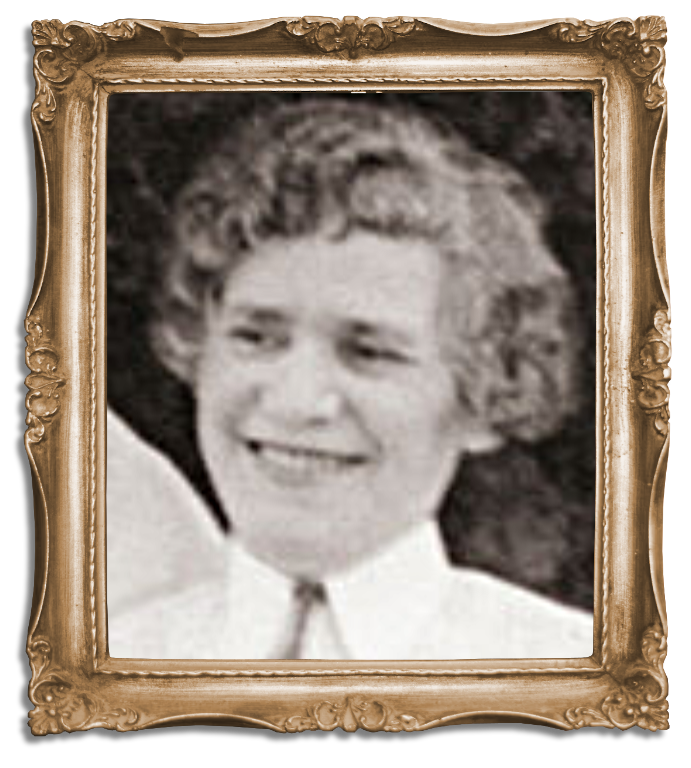
During Lizzie’s years at the Trail Inn, the establishment developed a sterling reputation for her kitchen fare, especially her fried chicken and her ravioli dinners and cole slaw. Lizzie’s reputation was that she was most congenial and had many friends.
Louis Stoppel and Lizzie were divorced in January 1932. On November 1, 1935, Lizzie’s declining health (thought to be due to breast cancer) led her to relinquish the Trail Inn. But on December 16, a little over one month later, she once again assumed the lease and the business. In September of 1937, Lizzie married Edward Harding “Mac” McElwain, who stepped in, along with his family, and helped her run the business.
Even though Lizzie was ill, she continued to personally pay bills and taxes through December of 1938. But the end came on January 3, 1939, at the age of 51. Lizzie is buried in East Los Angeles at Home of Peace Memorial Park on Whittier Boulevard. Her local obituary told of her speaking nine languages fluently, and of being an interpreter for the Los Angeles General Hospital.
Lizzie’s Trail Inn lives on as the SMHPS’s mountain history museum, normally open most Saturdays between 10 a.m. and noon. The spirit of Lizzie—congeniality and friendship—continues to greet all visitors.
Visit Us: 167 Mira Monte Avenue, Sierra Madre
View Our Current Events!
We have a great time and invite you to join us.